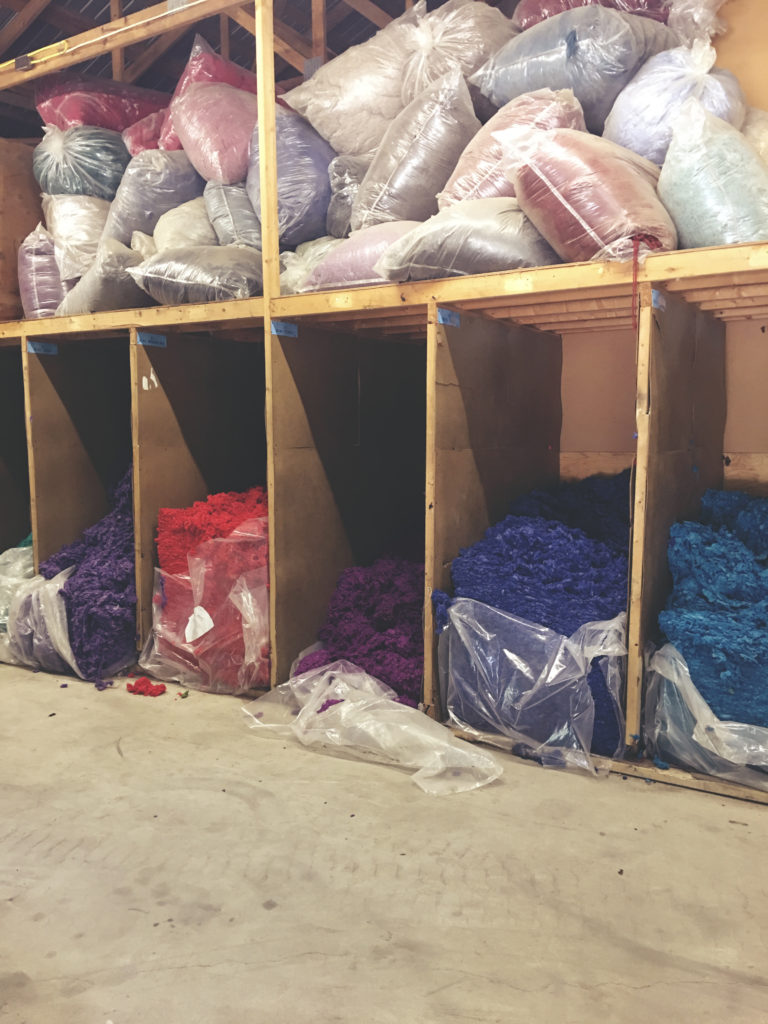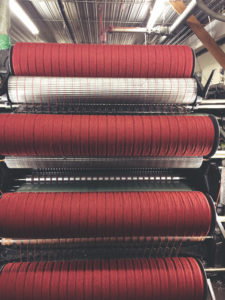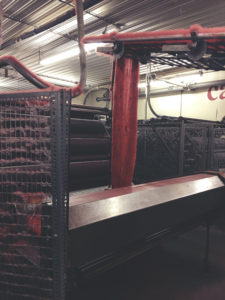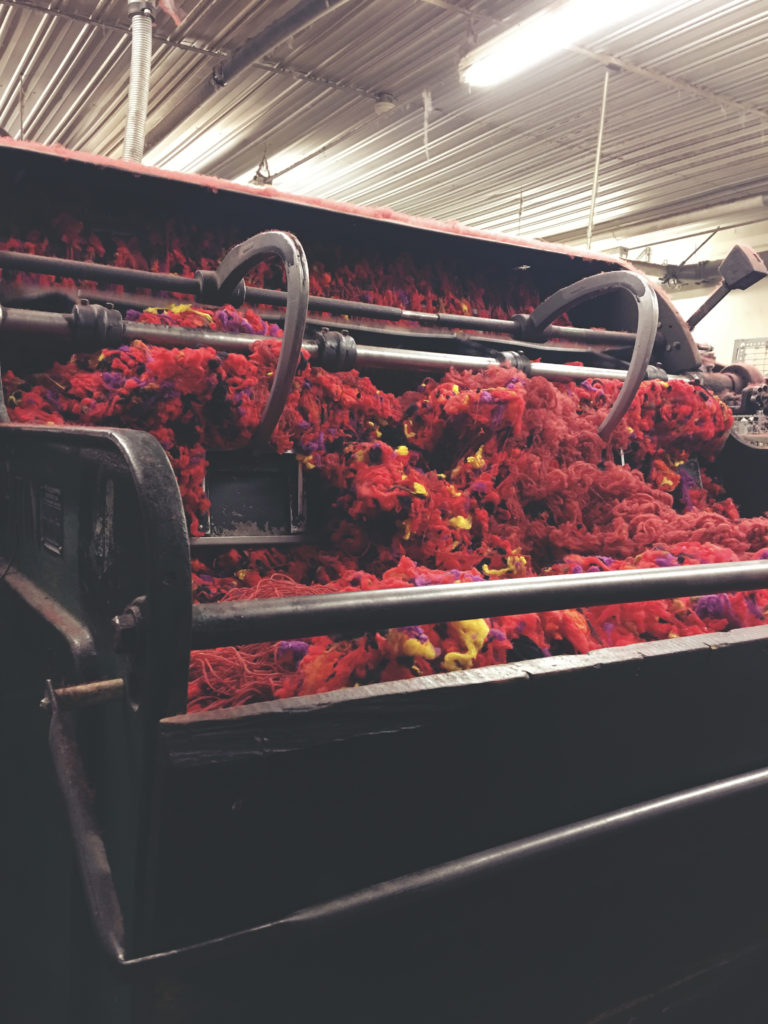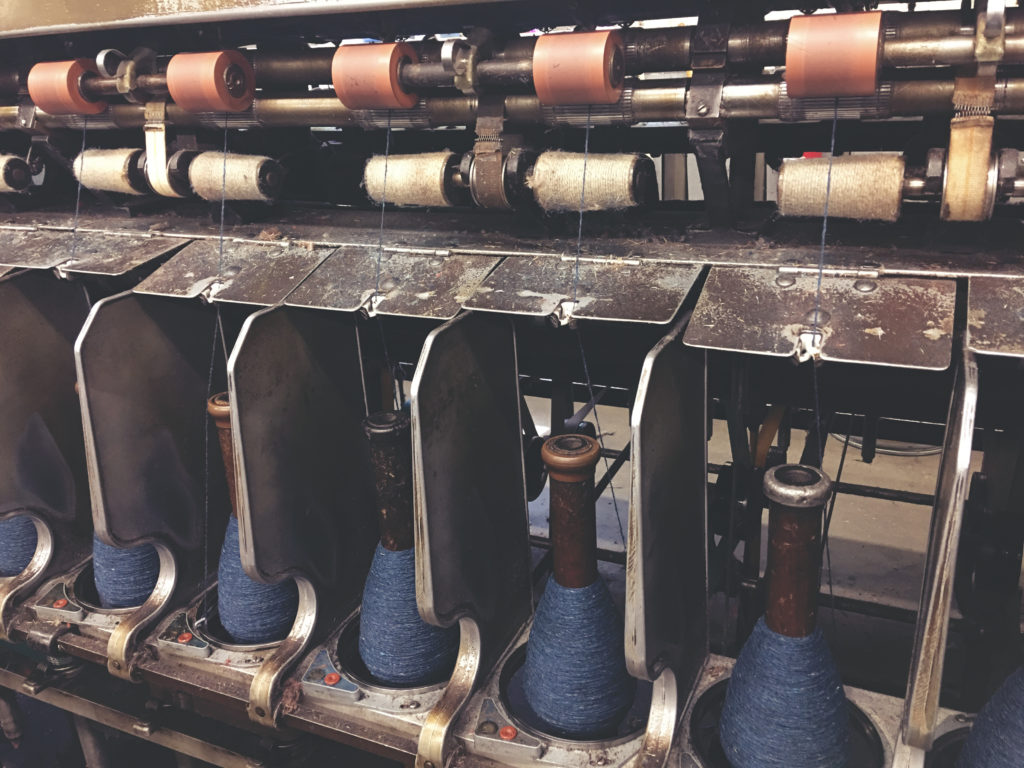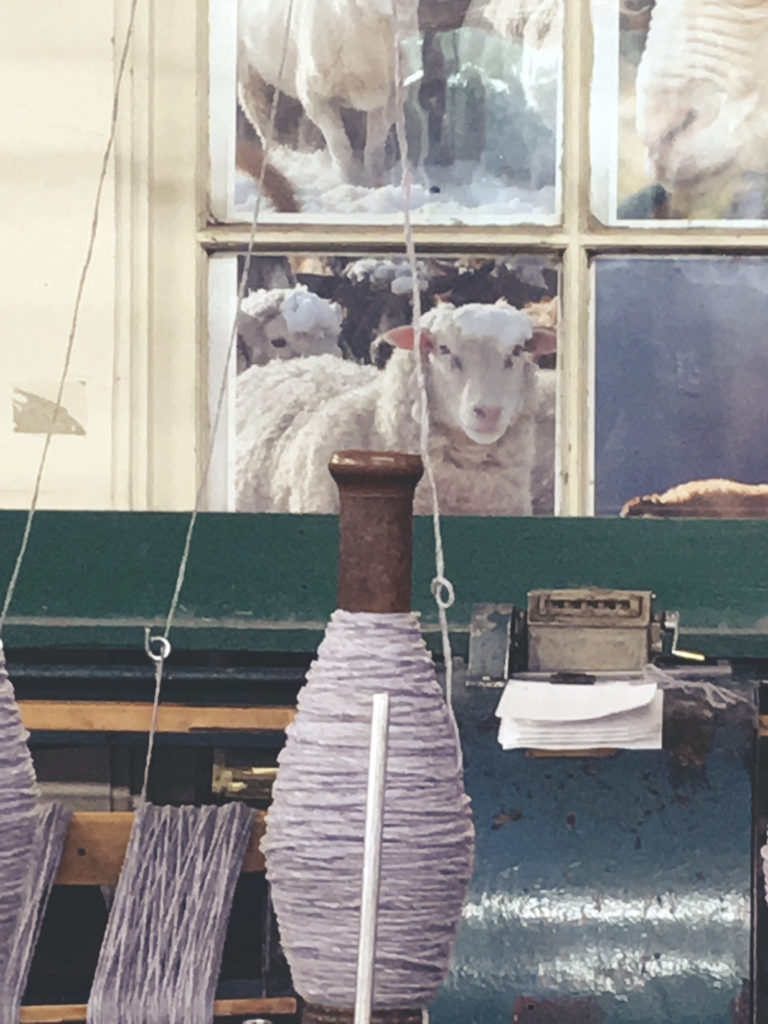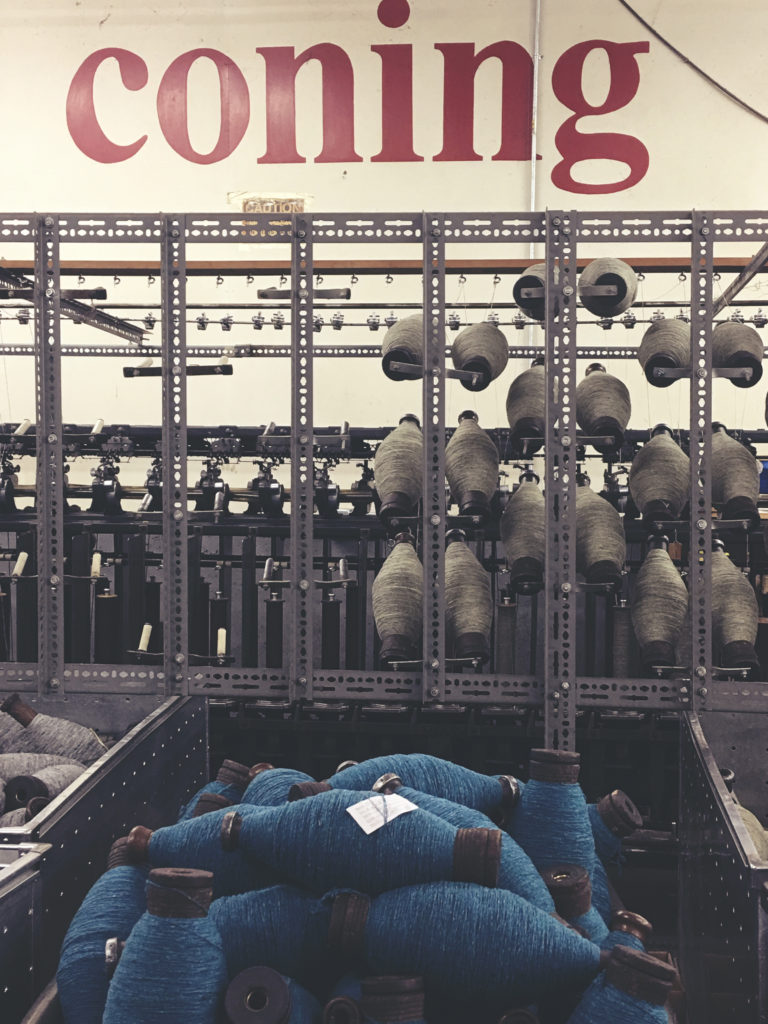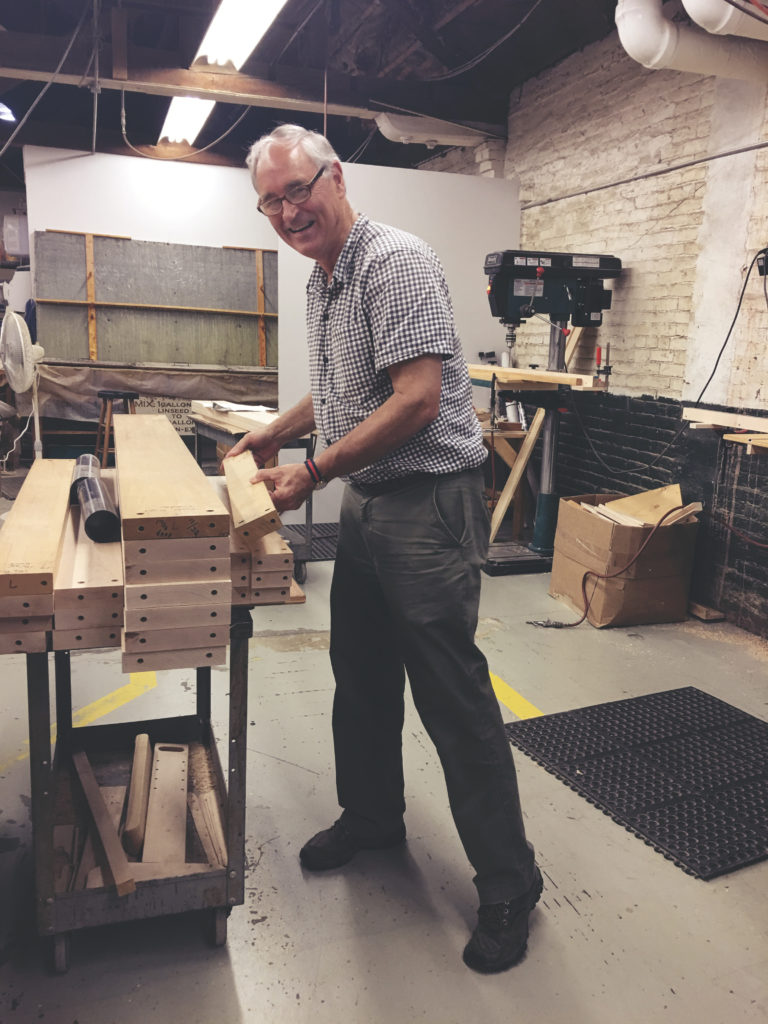Close your eyes and picture an ideal brick New England village nestled into the hills of Southern New Hampshire. Yarn has been spun here since 1794. The water running under the mill buildings is clear. Wild flowers line the pond shores and the one road that winds through town. People are friendly and congregate at the general store. Fantasy? No. Welcome to Harrisville, New Hampshire.
I recently had the good fortune to study with Jason Collingwood in Harrisville, one of only a handful of woolen mills towns left in the USA. While I could write volumes about Jason’s work and his many talents, he deserves his own entry, which I promise to write soon.
Our workshop was held in a meticulously restored mill building. Parts of our curriculum were tours of the spinning mill and the loom building workshop along with informal history lectures by members of the Colony family. The previous generation of the Colony family purchased the mill in the mid-1800s and the family members have operated the woolen mill ever since. Although his father and uncle were forced to close their doors in 1970 due to dwindling demand, John (Chick) Colony III, fresh from business school, saw a way to preserve the historic way of life in Harrisville. He raised the necessary funds to form Historic Harrisville Inc., a non-profit, which in turn was able to restore the 15 original mill buildings in town. In 1971, John then founded Harrisville Designs to continue the town’s historic textile tradition. Now Harrisville Designs leases space from Historic Harrisville Inc. in order to keep that organization viable. In 1977 the village of Harrisville was designated a National Historic Landmark. It is recognized as the only 19th century textile village in America that survives in its original form. Clearly Harrisville is a piece of living American history.
As a long time fan of Harrisville yarn I was particularly thrilled to see the wool-spinning mill. Here is what I learned and saw:
Fleece arrives “dyed in the wool”.
It is then sorted, carded, and spun the first time.
The yarn is spun again onto individual spindles.
Then it is coned.
And then skeined.
The final step is to wind the yarn onto cardboard cones to begin to prepare it for shipping.
Mine is a simplified rendition of the process, but I hope that you can gather how much effort goes into producing this exquisitely beautiful, truly fine yarn.
In addition, Harrisville Designs builds its looms on-site. This is Chick Colony showing us a pile of hard maple destined for loom kits. They make several types of looms including a very unique rug loom designed by Peter Collingwood that has shaft switching capabilities. (More on shaft switching later.) Chick’s father invented machinery needed to build that rug loom which is still in use in the workshop today.
I give many thanks to Chick, Pat, and Nick Colony for my Harrisville experience. I have a deep appreciation for what they have accomplished. Plus I thoroughly enjoy weaving and knitting with their yarn. I am eagerly awaiting the “souvenirs” I shipped home.
Toby
